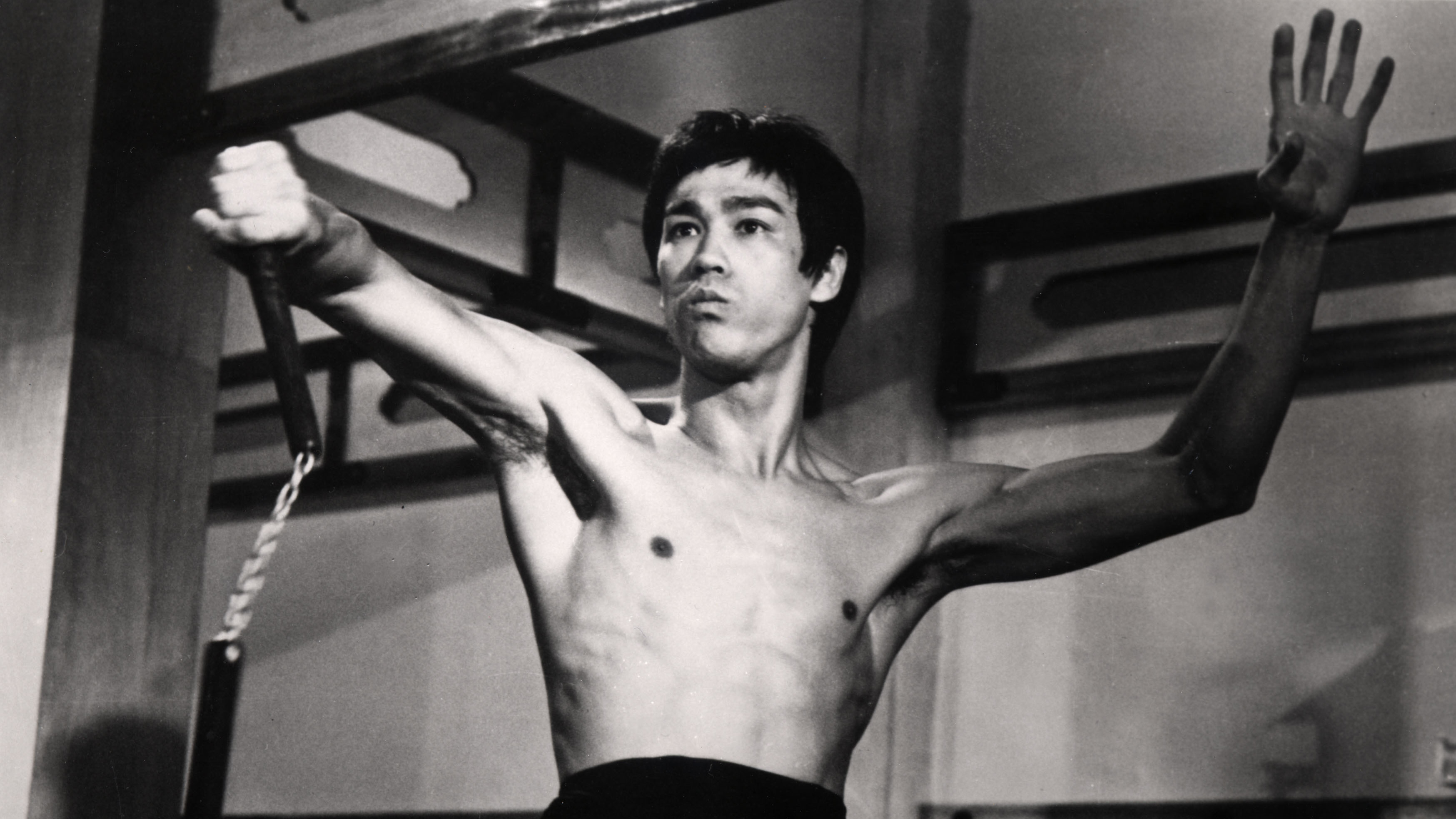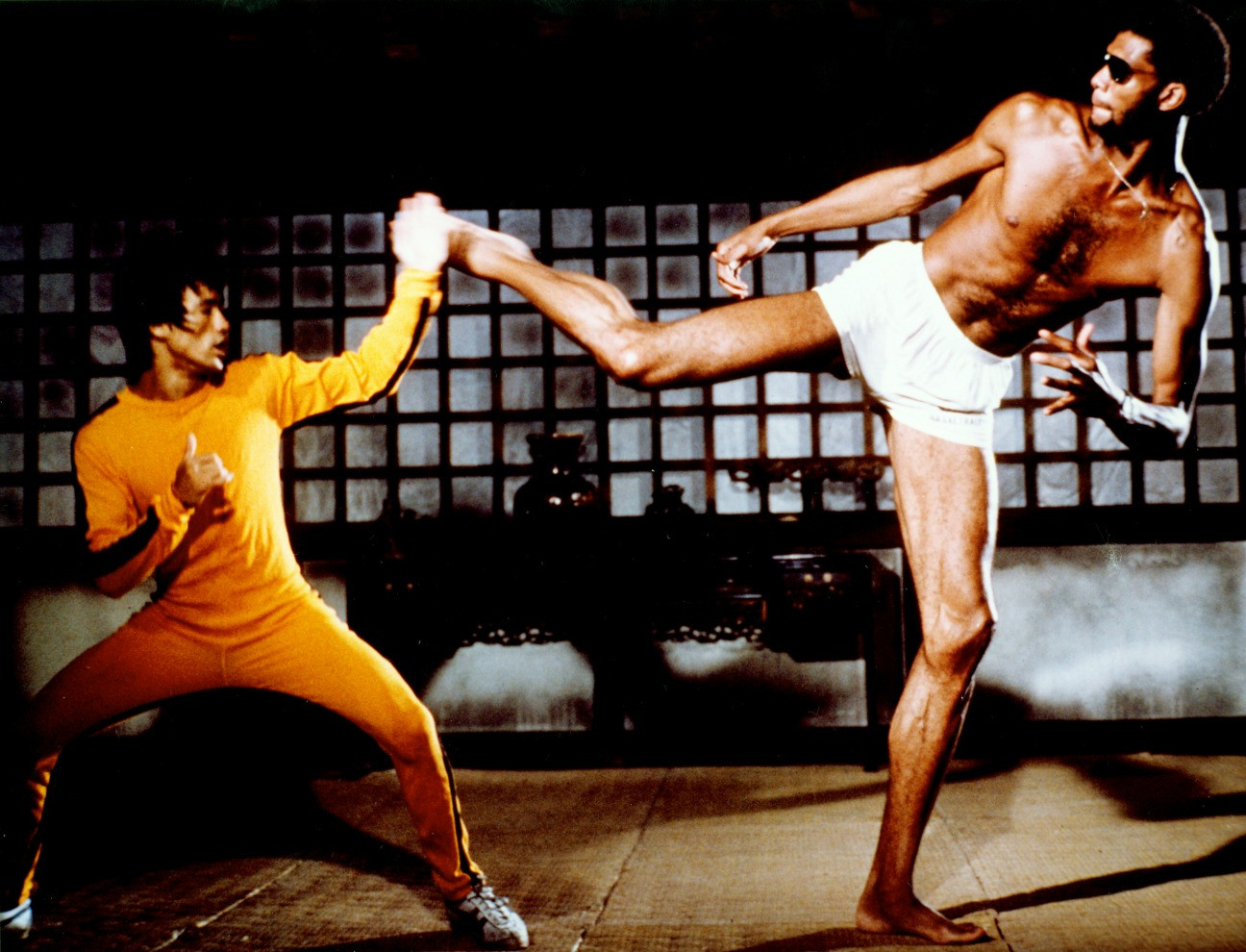Before legendary martial artist and film star Bruce Lee mysteriously passed away in 1973, he was working on his final film featuring an unusual cast member.

The Game of Death started production in August of 1972. The film was written by and would have been directed by the leading role, Bruce Lee. Lee, a philosopher, a writer, a star, a martial arts legend, a true renaissance man, needs only a short introduction. He is credited for transforming the way Asian actors were presented in American films as well as paving the way for modern martial arts due to his hybrid mix of various disciplines.
After appearing in over 20 films by the time he was eighteen, running a martial arts school and revolutionising as well as shocking the Chinese martial arts community, he landed a role in the film series The Green Hornet. He went on to appear in countless films and gained massive popularity in the western world continuing his prolific output until his death.
Lee’s final film, The Game of Death, promised to fit in comfortably with the rest of his oeuvre. Lee plays a character named Hai Ten; a retired martial arts champion forced to battle underground Korean gangs. Hai Ten has to battle up a five-level pagoda, taking on a new challenge on each floor. What was filmed of the movie and what has survived of the story layout is confusing, as despite the success of Hai Ten defeating each level, there seems to be nothing at the top. Perhaps this was a lesson planned by Lee in the writing of the film, or perhaps they simply did not get far enough into filming to decide on an ending.
The film was halted mid-production when Lee was offered a role in a movie called Enter The Dragon in November of 1972. Lee was smart to accept the offer. Enter The Dragon is now considered one of the greatest martial arts films of all time, and was the first one funded by a major film corporation, Warner Bros. Lee’s success was cemented by the film, and it resulted in an explosion of interest in martial arts.
Sadly, before the film was released and before Lee could resume filming The Game Of Death, he died. He had been suffering migraines and seizures for some weeks, and finally fell asleep without waking up again. His death was ruled an accident due to an allergic reaction Equagesic, a common ingredient in painkillers. Many conspiracy theorists spectate on the cause of his death to this day due to bad blood between Lee and underground gang triads, as well as supposed supernatural curses placed on Lee’s family.

Though about 100 minutes of the film was shot, many were lost in the film studios archives and only roughly 40 minutes of the original film remain. Robert Clouse, director of Enter The Dragon and evidently a big fan of Bruce Lee’s work, decided to finish the film using stand-ins. It was released five years after Lee’s death to financial success and mixed critical reviews.
What remains of the original footage is what is truly interesting. Many big names in the martial arts film world such as Ji Hian-jae and Dan Inosanto appear as masters of a level of the pagoda, but most unique is the final boss Lee must overcome, played by NBA superstar Kareem Abdul-Jabbar.
Abdul-Jabbar, one of the most highly decorated and admired basketball players of all time, had been a friend of Lee’s since his days at college and had studied martial arts under him. The scene in which Abdul-Jabbar stars is as brilliant as it is odd. Polar opposites in size and appearance, Abdul-Jabbar and Lee go back and forth and grapple vigorously until Lee’s character realises his enemies high sensitivity to light and uses it to his advantage. It is a beautiful blending of cultures and blurring of lines, and it is highly enjoyable to watch two men so obviously devoted to their craft work together.
Abdul-Jabbar made headlines last year when he lampooned Quentin Tarantino’s deception of Lee in the film Once Upon A Time In Hollywood. Bruce Lee is defeated by Brad Pitt’s character in the film in what Abdul-Jabbar described as a ‘sloppy and slightly racist’ portrayal. He argues that Tarantino’s character was a representation of the very stereotypes of Asian people that Bruce Lee wanted to dismantle in his work, and regretted the animosity of the character of Bruce Lee when the real man was a gentle, kind person who never went looking for a fight.
Bruce Lee was undoubtedly one of the most important film stars of all time. While some of his films may not be cinematically or thematically brilliant, the work he did towards dismantling inaccurate and offensive representations of Asian people in film is undoubtable. It is a shame his final film never achieved the vision he had, but what remains is a fascinating look at a strange and wonderful work.
Subscribe to FIB’s Weekly Alchemy Report for your weekly dose of music, fashion and pop culture news!







